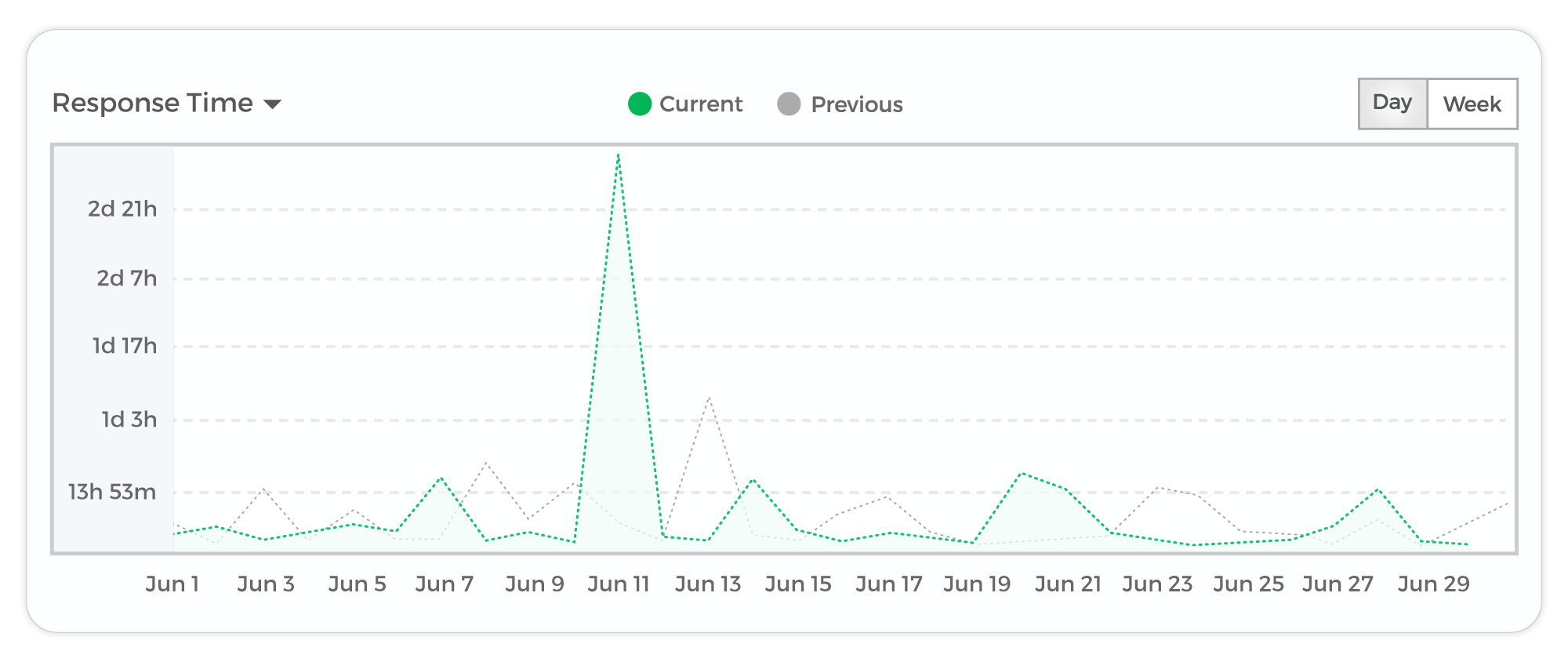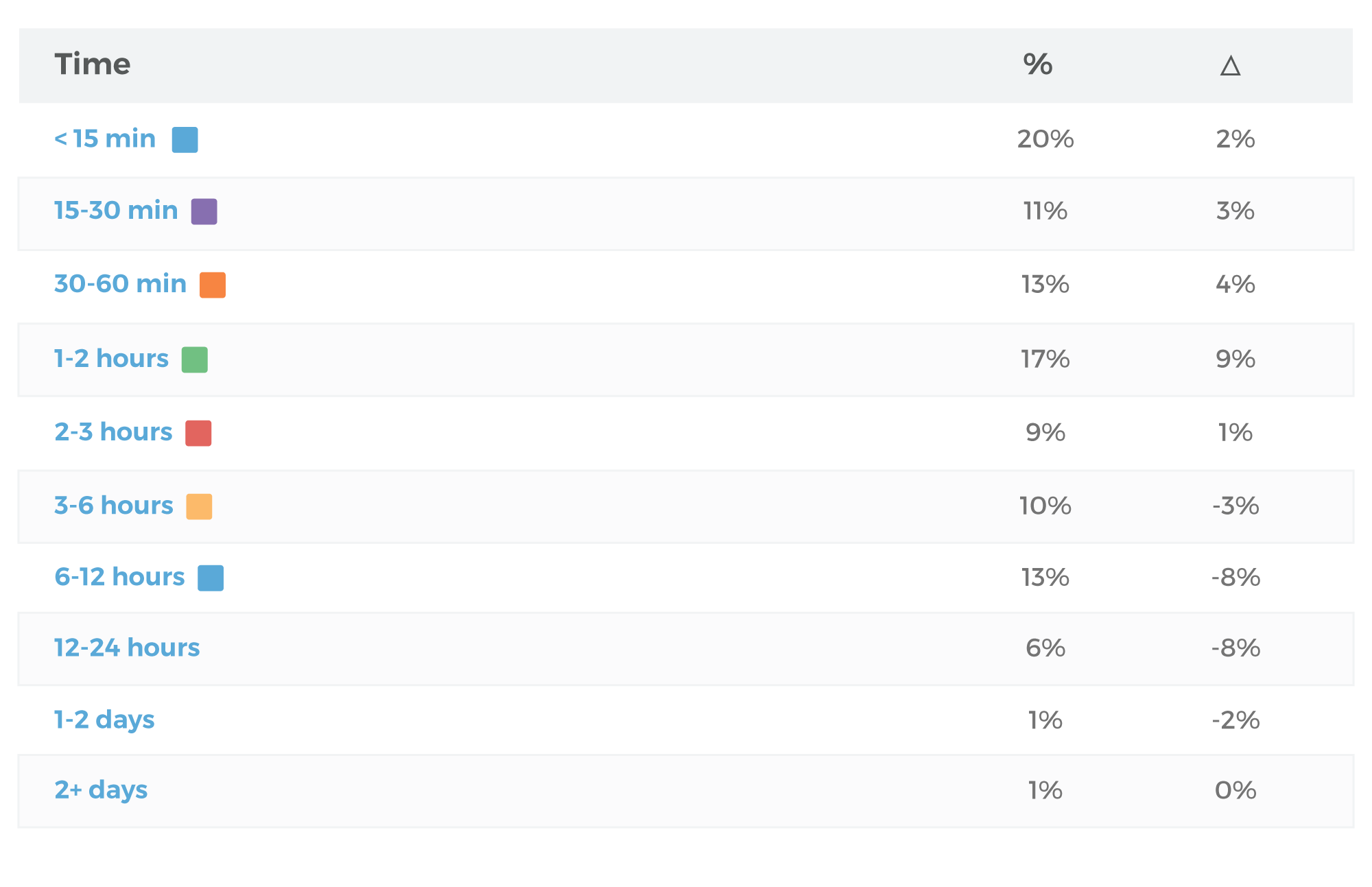
Back in the day, customer support was limited to connecting with a customer, serving a scripted response, closing the ticket, and moving on. A lot has changed since then. Now, the focus has not only veered towards hyper-personalized, proactive customer experience but also agent experience.
That makes it mission-critical to change your outlook on support success as well. Take a moment and think: metrics like AHT and FRT emphasize speedy ticket resolution, sometimes even at the cost of customer satisfaction. Doesn’t that make them shortsighted and cost-centric in our CX-centric world? Affirmative, right? I knew you were the smart one!
In this blog post, we’ll unveil how support organizations can ensure their performance metrics are prioritizing the right things. So, let’s get the ball rolling in the right direction.
Zeroing-in on Experience-Centric Customer Service Metrics
1. Time to Include Qualitative with Quantitative
Efficacious customer service requires enterprises to understand customers’ needs, identify recurring issues, and fix them. That makes it imperative to ensure all the cogs are running smoothly. To that end, many firms track quantitative metrics like FRT and AHT while others quantify the scores of customer satisfaction and customer effort surveys.
Little do they realize that these performance measures are not enough. It is crucial to include qualitative aspects such as data from customer support tickets, open-ended responses in surveys to find out the answer to ‘why’. Feeling confused?
Let me go all didactic for a minute here. Imagine you ran through the quantitative data and noticed that your website visitors (or prospects) get to the demo page but end up not filling the form. Clearly, you’ve identified the problem, but this doesn’t imply that you must recreate the page.
The need of the hour is to figure out “why” they are abandoning it. Rather than rolling the dice as you assume, it is better to simply install a feedback widget on the said page or reach out to them directly or use focus group surveys. Once you’ve understood the reason for their abandonment, devise a strategy to fix it. Sorted, right?
2. Prioritize Key Performance Indicators (KPIs)
There is a multitude of KPIs that enterprises use to measure CX. However, it is better to identify and work on improving some metrics relevant to your goal than look at many and fail to leave a mark.
Let’s take an example. The support engineers track AHT to get insights into how responsive they are. But what if the management only looked at AHT to determine how good the support team is? It might not give an accurate insight. Why? Because one painstakingly slow resolution can cast a shadow over 99 quick ones.

How a company measures Average Response Time.
That is why it is crucial to also consider Response Time Bands — a metric that shows the percentage of tickets that get replies within a specific timeframe (shown below). It provides them an accurate insight as to how long customers wait for a response.

How businesses use Time Response Bands to track support experience.
3. Use AI to Extract Insights & Elevate Experience
As many as 95% of all customer interactions will be through channels supported by AI by 2025.
AI is paving the way for customer service in more ways than you could’ve ever imagined. From automating processes and powering hyper-personalized CX and EX to elevating customer service outcomes, it does it all. And to top that, it gathers rich customer data and turns it into actionable insights. This offloads a big chunk of work for your support reps, thus allowing them to better handle tickets and provide proactive service.
It automates routine tasks such as tagging tickets, routing them to the best agents, analyzing sentiments, detecting urgency, and capturing qualitative data from various channels.
Let me explain with some examples. A few years back, Slack used to get more than 8,000 Zendesk help tickets and 10,000+ tweets per month. You must be wondering how they managed to handle that. They leveraged AI to consistently tag the tickets and gauge what the prospects or customers truly desire. Be it a new integration or additional features or so on. Tagging saves the day, you see.
Next up, detecting urgency. As we see in the image below, PayPal was asked for immediate assistance on Twitter for the last time before Jack switches to a competitor. In such cases, AI can emerge as a knight in shining armor. It can extract user intent and run a sentiment analysis instantly. The results can be passed on to the support agent. This helps them to reach out to the unhappy user and resolve the problem before the situation deteriorates.

Want To Know What More Artificial Intelligence Models Can Do?
We’ve barely scratched the surface. There’s more to AI than this. SearchUnify, a enterprise agentic platform & AI are making some giant strides forward in revolutionizing the support outcomes by building an ultimate agent desktop. Want to know how? Tune into this on-demand webinar and learn how cognitive tech transforms the end-to-end AX by smashing everyday challenges.
Also, if you want to experience how the bonafide duo works together to steer the ship to enterprise success, request a demo today!










